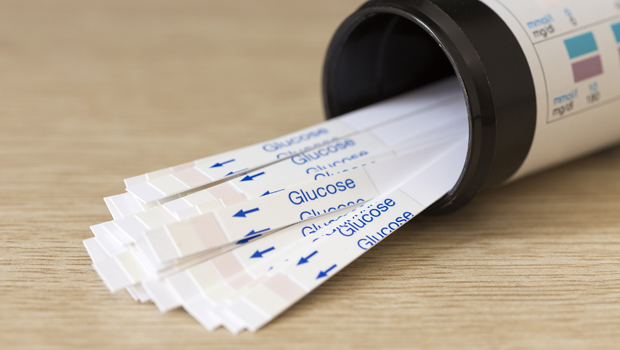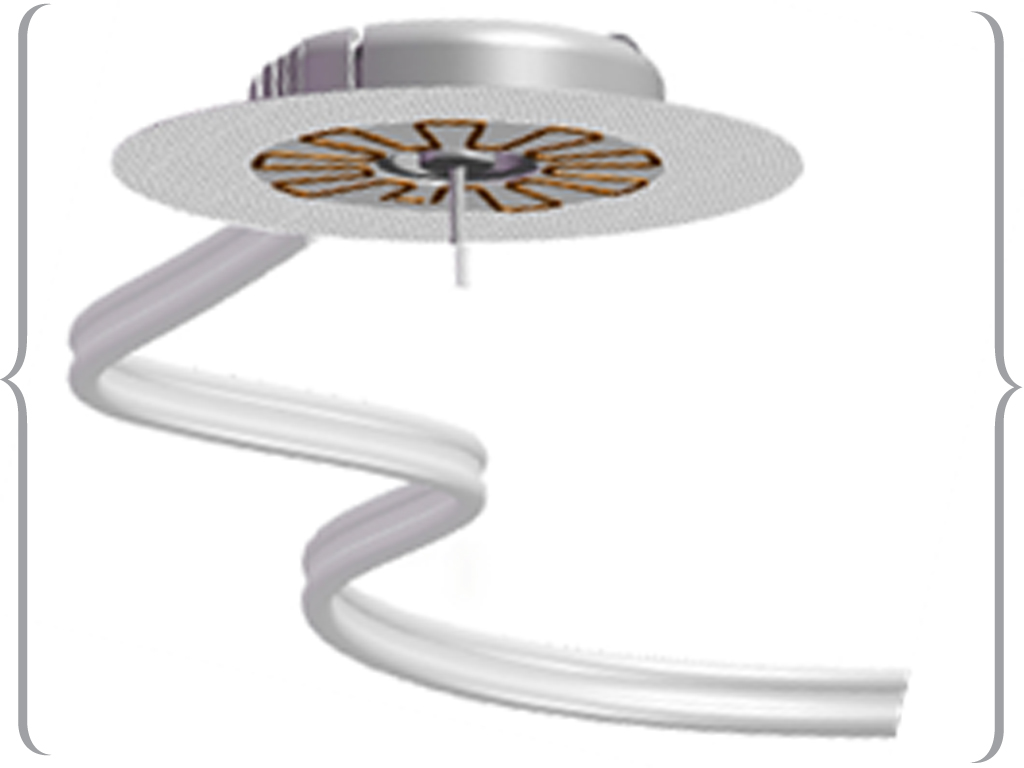Fighting for Better Test Strips

The test strip is the cornerstone of self-care for diabetes. The numbers revealed by strips can dictate what you can eat, how much exercise you can do, how much insulin you need, and how much trouble you might be in during a low. For years, however, people with diabetes have worried about the times when their meters and test strips have given inconsistent results. Dr. Richard Melker, a Florida physician diagnosed with T1 at the age of 53, has experienced the fear that inaccurate test strip readings can bring.
“I took some test strips and they read that my glucose was very high, and so based on that I gave myself some insulin. A short time later, I tested with a different batch of test strips and my glucose was in the 50s,” he says.
Melker, who was then a faculty member at the University of Florida, worked with colleagues to study the accuracy of test strips under different environmental conditions. What they found was that environmental factors, such as temperature and humidity, affected the reliability of test strips. Keeping strips in a car on a warm day, testing outdoors during high humidity, or even keeping an open vial of strips in the medicine cabinet of a bathroom can affect test strip reliability, says Melker.
High-profile test strip recalls for factory defects may grab the headlines, but Melker says such recalls don’t address the everyday problems revealed by his research. (Attempts to reach strip manufacturers Abbott and Novo Nordisk for comment on this story were unsuccessful.)
“I’m talking about a chronic, continuing problem which every person with diabetes faces,” he says.
Bennet Dunlap is the diabetes blogger behind Strip Safely, a grassroots online campaign that advocates for better test strip standards. Dunlap says strip accuracy is vital to national health care, especially with the growing number of people with Type 2 diabetes. He ticks off the reasons why: insulin is used by millions of people; insulin is an extremely dangerous drug; insulin is the second leading cause of ER visits for people over 65 due to adverse drug effects.
Dunlap contends that strip standards simply aren’t tight enough to be safe. Currently, glucose meters are required to be accurate within a 20% range for readings above 75, while accuracy for readings below 75 needs to be within 15mg/dL. Dunlap says 20% is enough of a discrepancy to go from “right on the money to way too much” when it comes to insulin dosage. Still, despite the dire health consequences of inaccurate BG readings, Dunlap says federal health regulators have been slow to take action.
“The FDA knows a problem exists,” Dunlap says. “They’re one of those big ships that doesn’t turn quickly.”
Strip Safely and other groups concerned with test strip and meter accuracy have lobbied the FDA via social media and in public forums, leading to some constructive dialogue and even some signs of change. The FDA actually has been leading the charge internationally among regulatory bodies for tighter standards on test strip and meter accuracy, Dunlap says. In 2013, the International Organization for Standardization (ISO) released test strip guidelines calling for 15% accuracy with readings over 100mg/dL, and accuracy within 15 points for readings under 100. Dr. Courtney Lias, director of the FDA’s Division of Chemistry and Toxicology Devices, says the FDA wanted the guidelines to go further to ensure safety, but the federal agency backed the measure anyway because it represented a step forward.

“When the document was released in 2013, we actually wanted tighter standards but that didn’t happen and we ended up (backing) it because it was better than nothing and better than what was out there at the time,” says Dr. Lias.
Since then, the FDA has been working on its own guidance document to advise manufacturers, Lias says. The guidance document says home use meters need to be accurate within 15% across the entire measuring range of the device, a measurement which would improve accuracy for the normal and hyperglycemic range by 5%. The proposed guidelines would also require test strip manufacturers to ensure they are testing strip accuracy in ways that reflect real-world conditions. Outer box labeling also would include information about performance in accuracy studies.
“We hope that will help a little bit in terms of transparency,” Dr. Lias says.
The FDA is seeking comment on the proposed rules until April 7th, 2014. Dr. Lias says regulators are hoping for a vigorous discussion that will help create a new document to improve public health. You can comment at www.regulations.gov.
There are other avenues for ensuring strip safety besides waiting for government regulation. One way to boost strip accuracy is to get more people with diabetes to use glucose control solution to calibrate their devices. Unfortunately, says Dr. Melker, people with diabetes rarely use the the solution because it’s expensive and expires before it is used up. Dunlap says it’s also hard to contemplate the added cost for “wasting” strips.
“If you have a limited number, it’s hard to say, ‘I’m going to throw one of these away with control solution,’” says Dunlap.
Health insurance policies can also be a barrier to test strip accuracy, says Dr. Melker. Sometimes, to keep costs down, insurance companies will shortsightedly force people with diabetes to use meters that aren’t as accurate as others that are available, he says.
“Before I switched insurance companies, my company wouldn’t let me use the (more accurate) meter,” Dr. Melker says.
Even with the variability of testing accuracy, the research is clear that meters are a vital component to keep people with diabetes healthy. Dr. Lias suggested taking common-sense steps to stay safe, including making sure BG results match the way you feel and making sure you are doing what you can to ensure accurate test results.
“Certainly good practice by users can help to reduce some of the error that’s seen,” she says.
Testing Best Practices
Bennet Dunlap of Strip Safely recommends the following steps to obtain the most accurate results from your test strips and meter:
- Talk with your health care providers to make sure the device you’ve been prescribed meets the newest ISO standards.
- Use the glucose control solution calibrated for your meter to at least test random cans of strips, if not every can.
- Make sure your hands are clean and free of sugar before testing.
- Understand how other medications might impact testing chemistry.
- Understand how other medical concerns, such as iron levels and hormone fluctuations, might impact testing chemistry.
- Avoid storing test strips in places where they are subject to hot or cold temperatures.
- Open one jar of test strips at a time and use it up within the time frame recommended by the manufacturer.
Thanks for reading this Insulin Nation article. Want more Type 1 news? Subscribe here.
Have Type 2 diabetes or know someone who does? Try Type 2 Nation, our sister publication.







